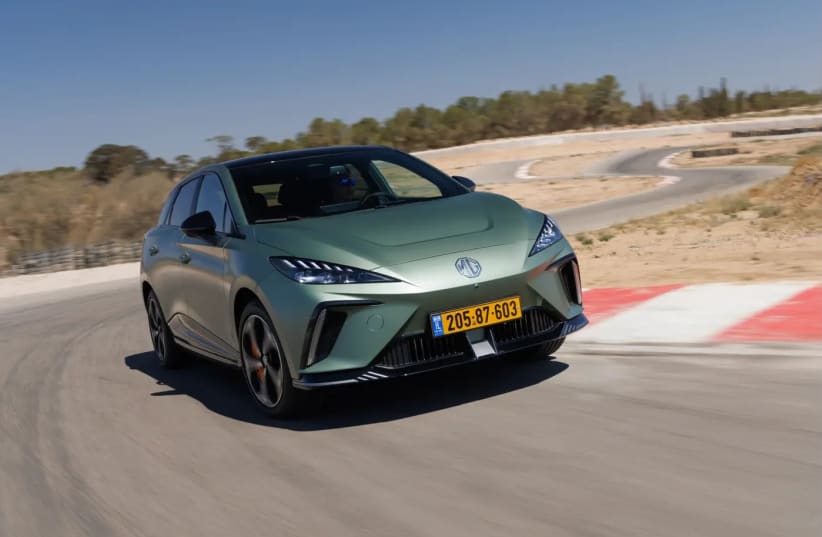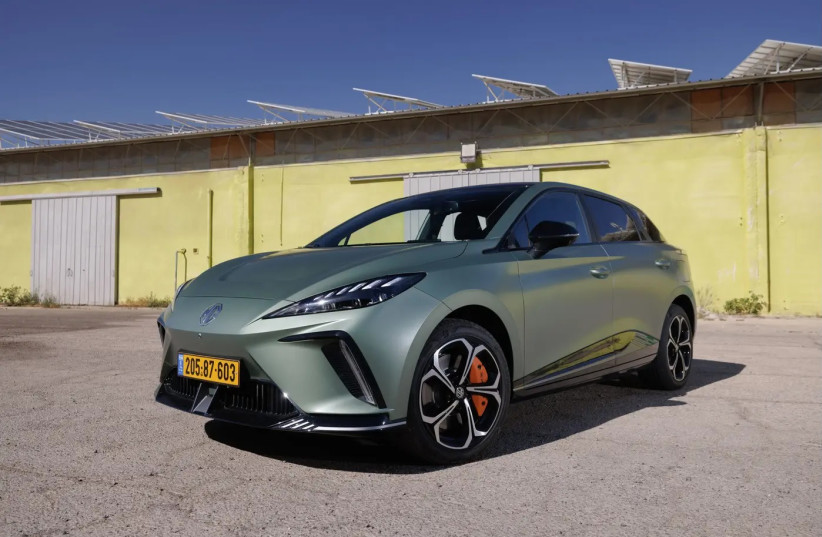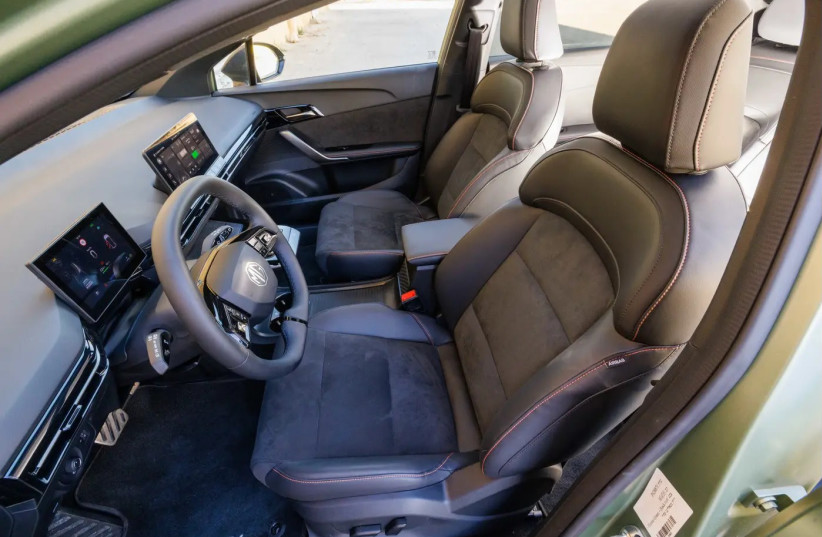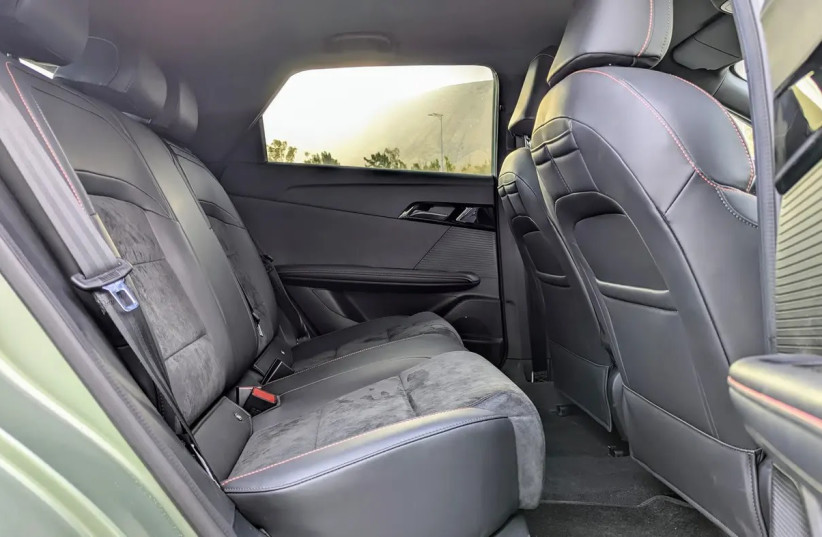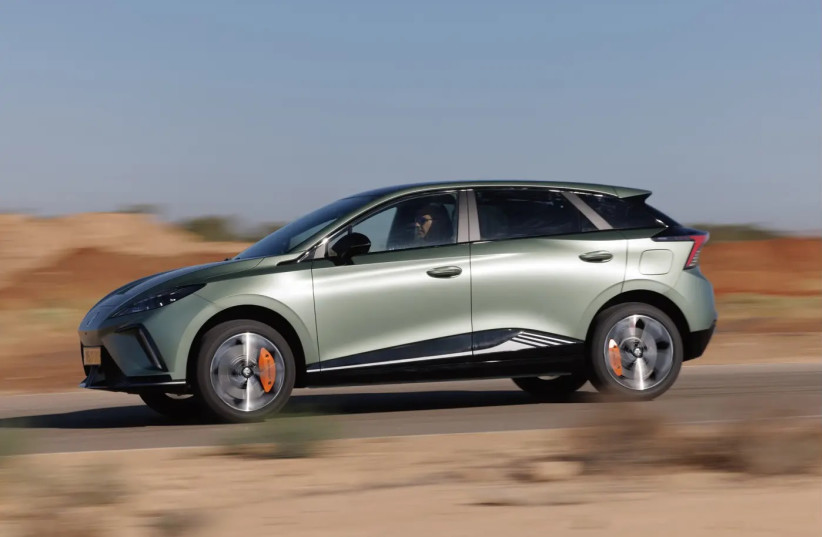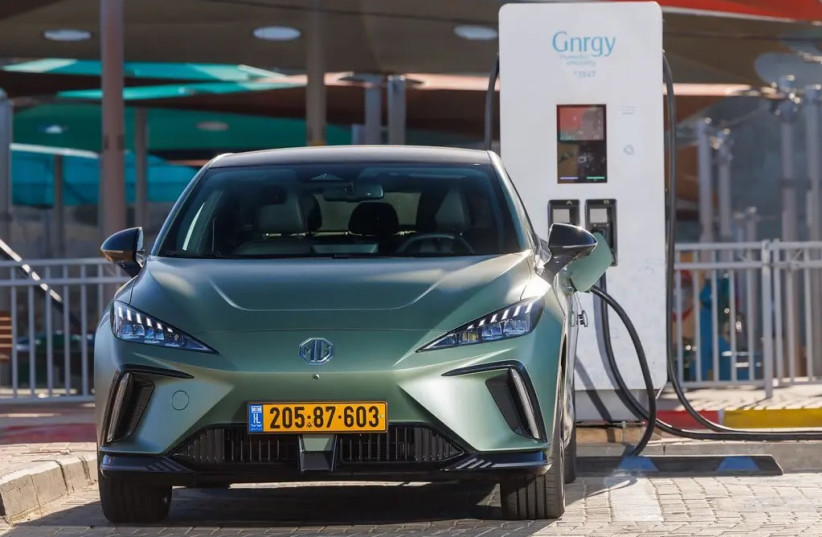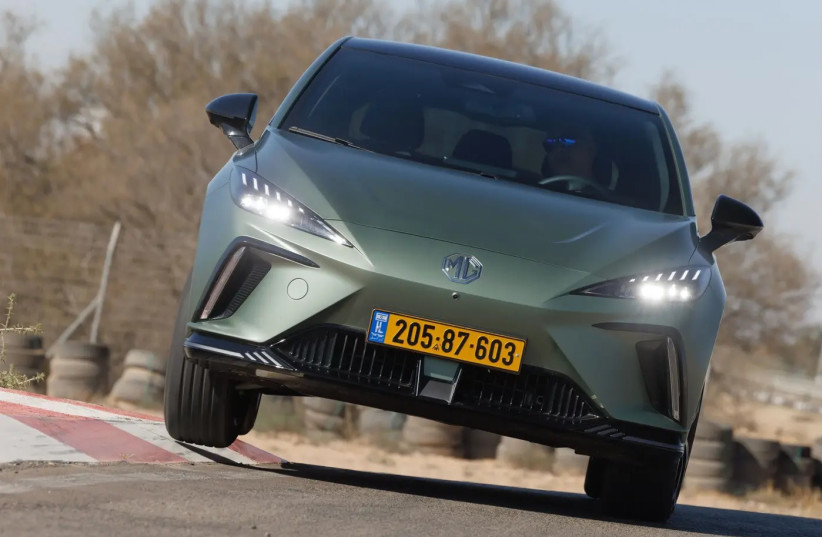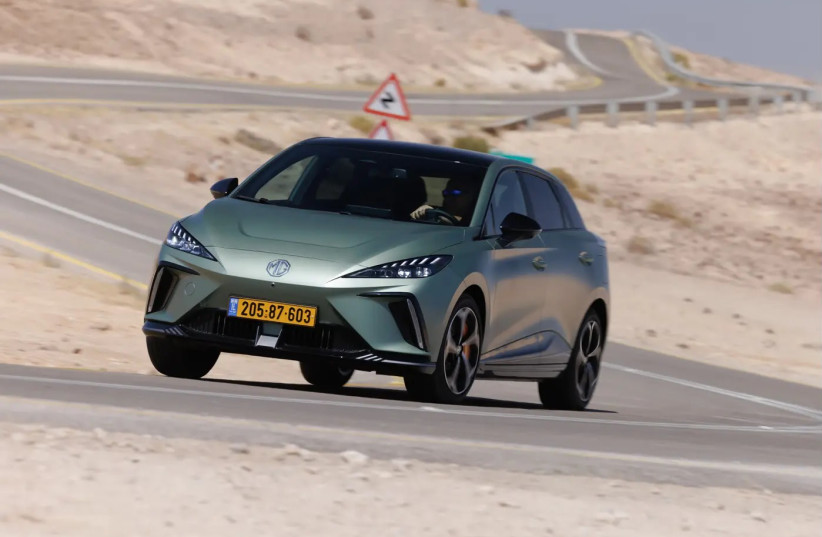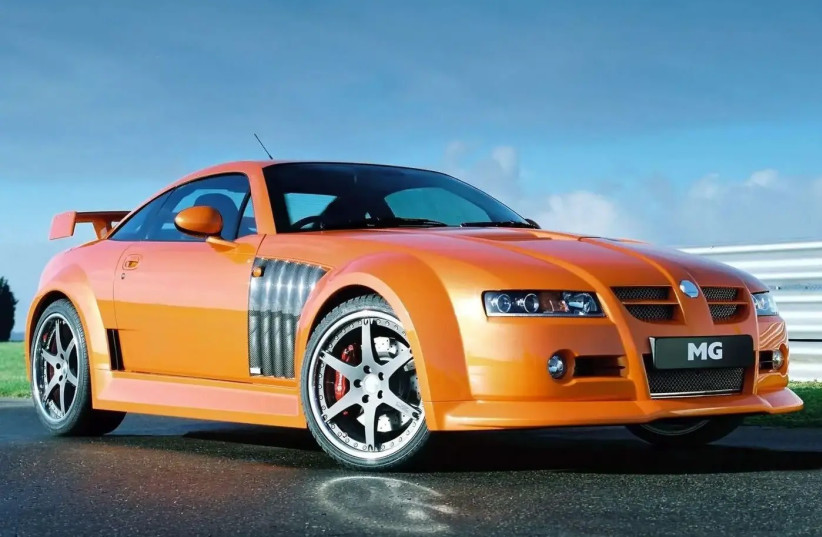Price: NIS 174,000
Competitors: Smart Brabus
We liked: Performance, equipment, behavior, price
We didn't like: Human engineering
Rating: 9/10
When I got my motorcycle license at the age of 16, the power of the strong and desirable motorcycles ranged between 7-7.5 horsepower. Two years later, regulations allowed upgrading the license to vehicles up to 500 horsepower, which then provided 60 horsepower at best. Towards release at the age of 21, the state allowed issuing an unrestricted license. Since then, the licensing system has changed from engine displacements to horsepower, but the idea of limiting the rider according to his age is still preserved.
I think about it when I stand in front of the MG4 in the X-Power version. Once, the prices of powerful and expensive sports cars served as a deterrent factor, equivalent to that motorcycle license. The chance that a young person who just finished his driving lessons could buy a powerful sports car was very low. Americans learned this lesson in the second half of the 1960s with the emergence of the muscle car that quickly became a youth killer.
But here, in front of you is a car with high environmental damage potential much greater than that of a two-wheeled vehicle, with performance and capabilities that were the exclusive domain of ultra-expensive sports cars until just a few years ago. What separates it, and well each one with a driver's license is a sum of NIS 174,000, a price of a new Korean family car, and until just a few years ago the price of a hot hatch with half its power.
Design: In contrast to what you will find in the top versions of car manufacturers such as Honda (with the Civic Type R), Audi (with the RS3), Mercedes (with the A45 AMG), or even the relatively conservative Volkswagen Golf GTI, the exterior design of the MG4 X-Power is not flashy and ostentatious. Subtract from it the green-olive-matte color of the test car and the orange caliper covers, and it is not very different from the regular MG4. There are no aggressive air intakes threatening to suck in small children and pregnant women, no steroid vehicle bulges, no wing spoilers, and certainly no exhaust pipes at the rear. In this respect, it is a very contemporary expression of the cliché "a wolf in sheep's clothing".
Passenger cabin: There is an effort to add a bit of spirit with sporty and supportive seats, a combination of cloth and alcantara, and also a light color accent. But it is a bit too little overall and with a driver environment that is not particularly impressive in a specific way. Not that I am in favor of unnecessary makeup, but still, a touch of color, some visual refreshment that will remind the driver of where he is sitting, would be welcomed. The rest of the business here is exactly what is known from the MG4; good front visibility and problematic rear visibility due to the height of the rear seats and the small rear window, a very good driving position marred by a hard plastic knee-shelf on which the gear lever is located, a decent amount of storage spaces, not all of them very useful, and uneven material quality. Here too there is a rather simple instrument cluster display, with the same layout of not very rich data display and no changes between driving modes.
The steering wheel has two multifunction buttons that allow you to choose which functions to activate. You will need to operate the rest of the things from the touch screen. There is Hebrew there, and it is important when you need to navigate between menus and screens to activate basic functions such as cruise control at the beginning of a journey or even after switching driving modes. The use of the mobile reflection "locks" quick access to shortcuts and climate control. Yes, there are still gaps that the Chinese need another generation of products to narrow.
In the spacious rear seats for two adults, they receive the same upholstery combination, but do not receive separate air conditioning vents and have a single charging port. Like the front passengers, there is a very wide door sill that needs to be stepped over, as indicated by shoe marks on the threshold.
Cargo space: Here too, similar to all MG4s, the volume itself is reasonable for a compact car (363 liters), but the cargo space is low and limited due to the rear shelf. There is a suspension hook and two storage compartments on the sides, here too, a spare wheel is not present. Similar to all MG4s, its drawback is the lack of a 12V socket inside, and even praising it again for the option to turn it into a "power station" using a converter that turns the charging port into an electrical outlet.
Equipment: The equipment list is good, as in the long-range X range version of the ZS. It includes, among other things, the digital instrument panel, a 10.25-inch touchscreen with Hebrew support and built-in navigation, Apple Carplay and Android Auto connectivity, 360 cameras, climate control, heating for the steering wheel and front seats, electric adjustment for the driver's seat. This version also adds combined leather and Alcantara seat upholstery, orange caliper covers, and chrome finish to the door handles.
Performance: The X power distinguishes itself from the other versions of the MG4 by using two engines. The back is like the others and adds one in the front. The combined power of the two stands at 435 hp and 61.1 kgm. Now take a moment to digest this number, which was impressive in any vehicle with an internal combustion engine and connect it to an electric car - one that doesn't need to reach maximum RPM to open the gates of its power, doesn't need to call upon the transmission ratios in the gearbox, and what you get is a kick that transitions you from a static to a mobile state in the trick of a back lean. Like any electric car, it is much more impressive from 0 to 100 km/h than in higher speed ranges, even there, with so many horses, its ability to continue to accelerate up to its impressive maximum speed of 200 km/h is very impressive.
Electric consumption and range: Let's start from the end, I will omit the holy grail of electric consumption reviews and I will tell you now, the range here is not the issue. Just like we don't start with the minutiae of fuel consumption for an extreme sports car. Know every driver that this car operates differently on time and distance formulas for speed. It comes equipped with a smaller battery than the X Range. There are 64 kWh here, not 77, clearly a conscious decision to save weight, which stands at 1.8 tons, very much, but not bad in relation to its power-to-weight ratio.
The declared range is 385 km, but from here on it's up to your feet. Drive economically and use regen, and you'll easily achieve 360-370 km. Driving in a mixed direction, including some aggressive driving, will significantly reduce the range to 270 km. At the end of the day, we reached a realistic range of 320 km. It charges at a rate of up to 140 kW at fast charging stations, with an additional 10 km added per minute of charging at a 150 kW charger (which usually doesn't operate at full capacity).
Comfort and behavior: It seems that no one will be surprised if we mention that the X-Power is a tough car. However, we were surprised to find out that it is much less tough than we imagined it to be. In fact, despite its performance, it's much better-behaved and smoother than the X-Range we drove recently. The only complaint we have is the poor noise insulation on a coil that isn't good enough.
What about behavior? Well, we understood that today in the electric world, horsepowers are very cheap. The "standard" of electric compact crossover and family cars already stands at around 200 horsepower more or less, and even numbers reaching 300 hp no longer really break the bank. And with all due respect to 3.8 seconds from zero to a hundred, it doesn't necessarily mean that it's a sports or enjoyable car to drive. But it is. Once you switch the driving mode to "sport," it manages to impress more and more with every passing moment.
It's not just about power and availability in the future, but also its ability to stay balanced and expected even with rapid weight transfers and direction changes. The suspension and tuning of this car are much more refined and precise than what we encountered in the X-Range, for example. The steering is quick and precise, without feedback, but we've already gotten used to that. If there was one point that could really have improved the package here even more, it would be a smoother power transfer in situations of strong acceleration out of corners, where the front and rear engines distribute the power according to grip. In some situations, this came in "cuts" and not in a smooth flow of power. But these are really minor details that in the overall picture do not change the bottom line: in MG, they have just seen the most convincing electric "hot hatch" ever.
Bottom line:
In the years 2003-2005, just as the last breaths were being drawn by what was known as "MG Rover," it also created a very strange creature. They called it the MG XPower SV, it was a coupé car that was produced in Italy and had its final assembly in England, based on Qvale's Italian Mangusta which was itself a rebranding of the De Tomaso Bigua. All this was meant to allow MG to have a model suitable for marketing in the United States. The look was aggressive, the performance was extreme, it was a mishmash of parts from other cars, the assembly quality sometimes rose to "below average," and in the end, about 82 units were built.
The test car shares its name with that British MG, as another effort of the current MG, now a brand of the Chinese SAIC, to position itself as a continuation of the original manufacturer. But the circumstances and the car are completely different.
The MG of the early 2000s desperately needed not a sports car but regular, sensible models that would sell in large quantities. The XPower SV is an excellent example of one of the reasons that led to the collapse of the British car industry. The 2024 MG is organized in terms of regular and sensible models that are sold in large quantities, but it needs a sports car that will cast an attractive halo over its products and stand out in the market.
The natural inclination is to see the XPower as a physical or spiritual heir to hot compacts like the Hyundai i30N or the Volkswagen Golf GTI. It does indeed look like one in concept, but it's not. It will be faster than them under all road conditions, certainly in a straight line, a "flying hour" where it will cost you much less in fuel and maintenance, not to mention the significantly lower purchase price in tens of thousands of shekels. However, it's not as connected, engaging, and analog as those two and their likes, and not as well made in terms of human engineering and driver interface.
In conclusion, the MG4-Power definitely stands out. I arrived at it immediately after driving the X-Range, a dynamic vehicle that left a less amazing impression, but I found a car that in terms of performance and sporting abilities truly surprised me. It has a list of drawbacks related to the basis it sits on in the field of human engineering, the feeling in the passenger compartment, and maybe even some slight refinement to the propulsion system, but the importance here is at the level of intentions declaration and the ability to implement them. And even after weighing the disadvantages against the advantages, when a price tag of NIS 174,000 is attached to all of those elements, for those looking for a compact, performance-oriented, electric car - it's simply a great deal.
On the technical side: MG4 X POWER
Engine, propulsion: 2 electric engines, dual propulsion
Battery: 64 kWh
Power/torque (kW/kgm): 61.1/435
Transmission: Auto, direct drive
Dimensions:
Length (m): 4.29
Width (m): 1.83
Height (m): 1.52
Wheelbase (m): 271
Cargo space (liters): 363
Performance:
Acceleration 0-100 (seconds): 3.8
Maximum speed (km/h): 200
Range (manufacturer): 385 km
Range (test): 320 km
Safety:
European Crash Test Rating: 5 out of 5 stars
Active safety: rear cross-traffic alert and braking, door opening warning for passing vehicle, off-road vehicle alert including correction guidance, deviation correction, adaptive steering control, automatic braking, combined lane departure warning and steering control
Air pollution:
Group 1 out of 15
Warranty:
7 years or 150,000 km for the vehicle, 8 years or 150,000 km for the battery
